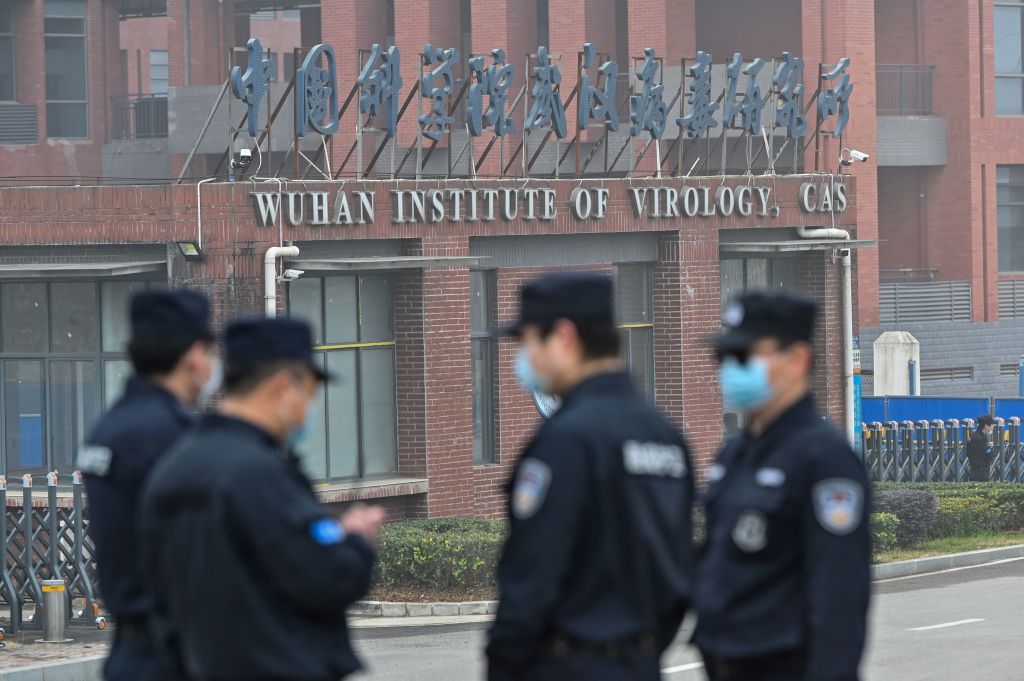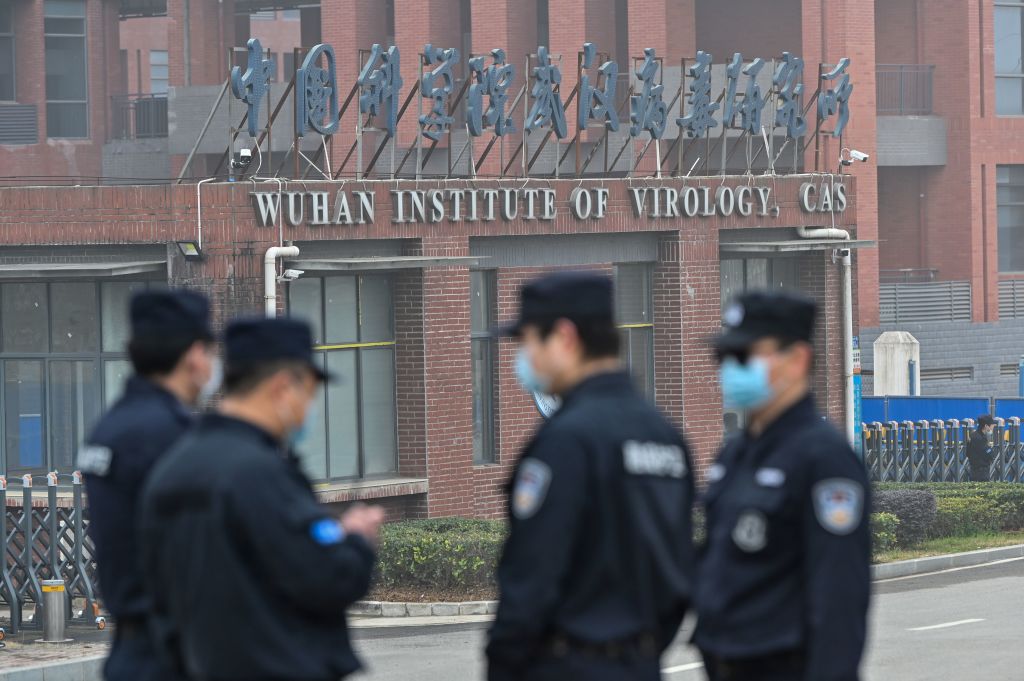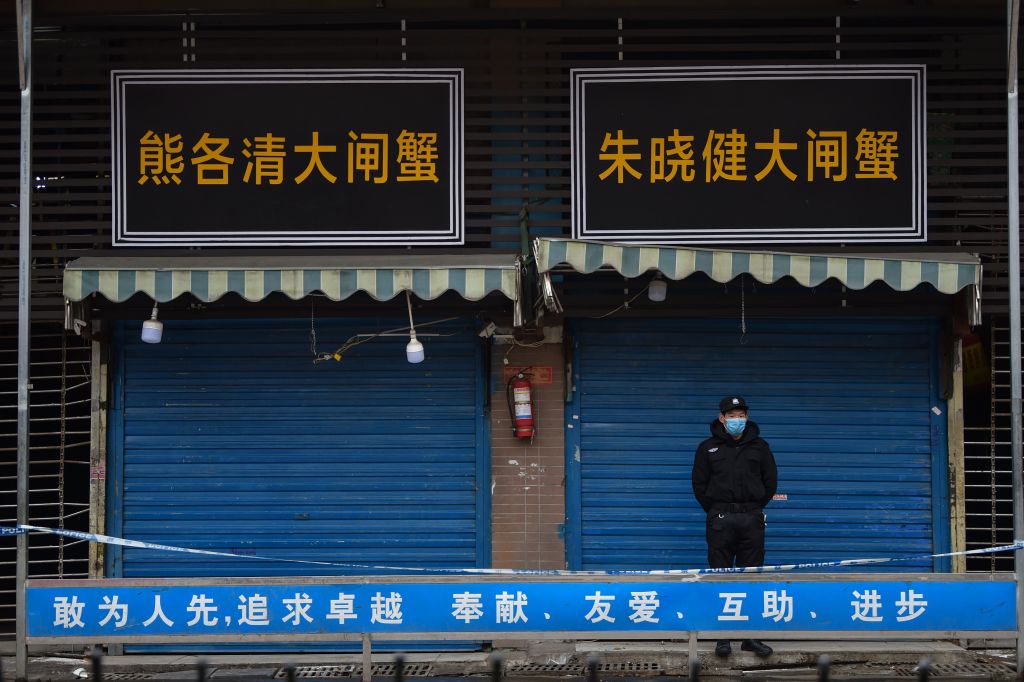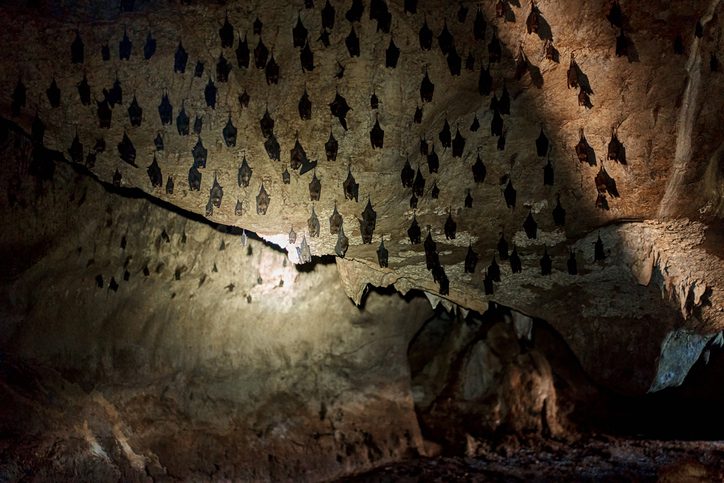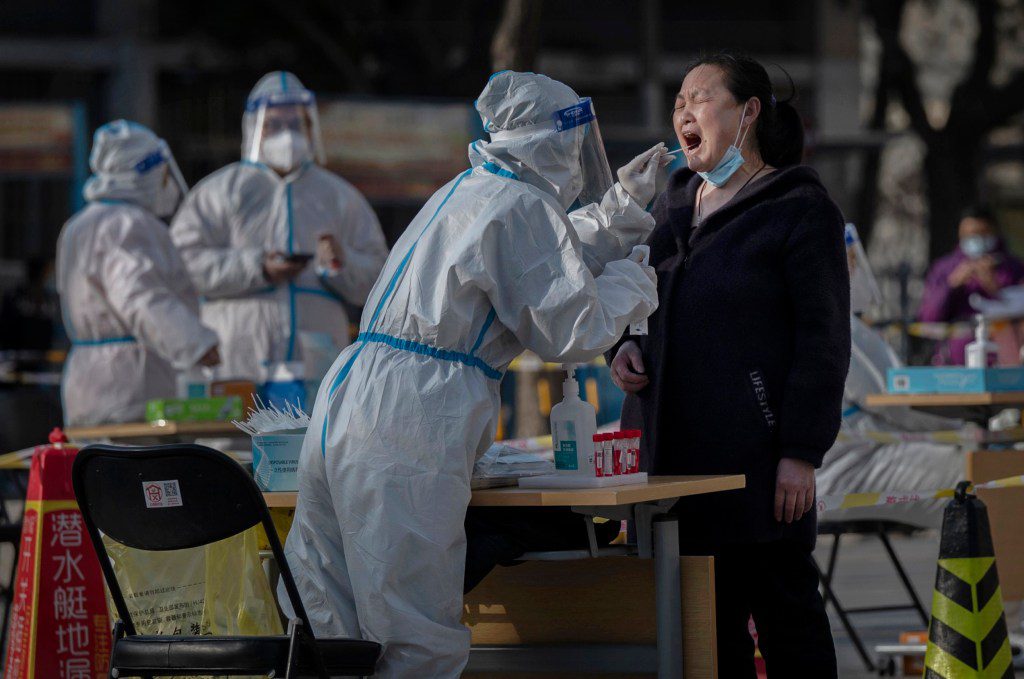Covid-19 most likely started in a lab, a recent report has found.
The origin of the pandemic has long been debated. Some believe the virus came from a ‘zoonotic spillover event’ and spread from animals to humans, possibly at the wet market in Wuhan, China, where the disease was first reported.
Others believe it leaked, accidentally or otherwise, from a laboratory – namely the Wuhan Institute of Virology, also in China.
Now, scientists in Australia suggest that Covid-19 is more likely to have had an ‘unnatural’ origin than a ‘natural’ one.
A research team used an established risk analysis tool called the Grunow-Finke assessment to create a likelihood scale for possible pandemic causes.
Results from the assessment indicated that the virus had an ‘unnatural’ origin – with the fact that the first infections were in the vicinity of laboratories studying coronaviruses noted as one of the strongest indications.
The study emphasizes that the first cases of Covid-19 were reported in Wuhan, China, on 30 December 2019 – all within close proximity of both the Wuhan Institute of Virology (WIV) and the Wuhan Center for Disease Control and Prevention (WHCDC).
Dr Xin Chen, a researcher at the University of New South Wales (UNSW) in Australia, said: ‘The WIV had been conducting experiments involving SARS-like coronavirus in bats since 2010.
‘One of the bat viruses being studied at the WIV shares a 96.1% homology [match] with SARS-CoV-2, something which was only revealed after the pandemic began.
‘The WIV was only eight miles away from the Huanan Seafood Wholesale Market, where some of the initial cases were linked to.
‘The WHCDC was also studying coronaviruses, and on December 2, 2019, less than a month before the first infections, it moved to a location 280m from the Huanan Seafood Wholesale Market.
‘A shift like this may have increased the chance of a laboratory accident.’
Dr Chen added that although some scientists use the outbreak at the wet market as an indication of a ‘natural’ or zoonotic origin, several of the first infected people had not visited Huanan.
‘This points to the possibility that Huanan was a source of an amplification event, rather than the origin of SARS-CoV-2,’ he said.
‘It is also worth noting that evidence of an intermediary animal host – necessary for this theory – is lacking.’
The team also highlighted ‘unusual’ actions by scientists working at the WIV as a factor pointing to a lab leak origin of Covid-19.
Dr Abrar Chughtai, an epidemiologist at the University of New South Wales, explained: ‘In September 2019, control of the WIV lab was handed over from civilian to military command and control, and a contractor was hired to renovate the ventilation system within the facility.
‘Simultaneously, for reasons unknown, the WIV removed a large virus database containing approximately 20,000 specimens from bats and mice that had previously been accessible to the public.
It is not clear if the database included sequences relevant to the origin of SARS-CoV-2 and if any effort was made to hide it.
He said that not all the requested information, like lab records, was given to the World Health Organisation team investigating the origins of Covid-19 in 2021.
Dr Chughtai also mentioned instances of inadequate biosecurity procedures at the WIV.
He said, 'Some scientists didn't follow proper protective equipment rules when dealing with bats and were bitten by them.'
'And, in early November 2019, some staff members from the institute were hospitalized with symptoms similar to Covid-19.'
Dr Chandini Raina Macintyre, another epidemiologist at UNSW, also pointed out inconsistencies in statements from scientists who originally supported the possibility of a 'natural' Covid-19 origin.
'Requests for information in the US uncovered that virologists who publicly claimed that SARS-COV-2 had a natural origin privately expressed doubts about this to each other, discussing the possibility that research at WIV might have led to the creation of SARS-COV-2,' she said.
'It's possible that US funding of some of the research at WIV influenced the public messaging about natural origins to be promoted and discussion of a lab accident to be suppressed.'
The study, published today in the journal Risk Analysis, acknowledges that its Grunow-Finke assessment cannot prove that Covid-19 leaked from one of the two labs in Wuhan.
However, it also argues that the risk factors outlined throughout the assessment cannot be ignored.
Dr Chen said, 'Lab accidents are common, and if the pathogen is highly contagious, an accidentally infected worker can trigger an epidemic in the community.
The first cluster of cases were near a premier coronavirus laboratory, known for experimenting on SARS-like viruses, as well as a second lab working on coronaviruses, indicating an unnatural origin.'
The World Health Organization is still trying to find the origins of the Covid-19 pandemic, which affected the world and is believed to have killed more than three million people.





